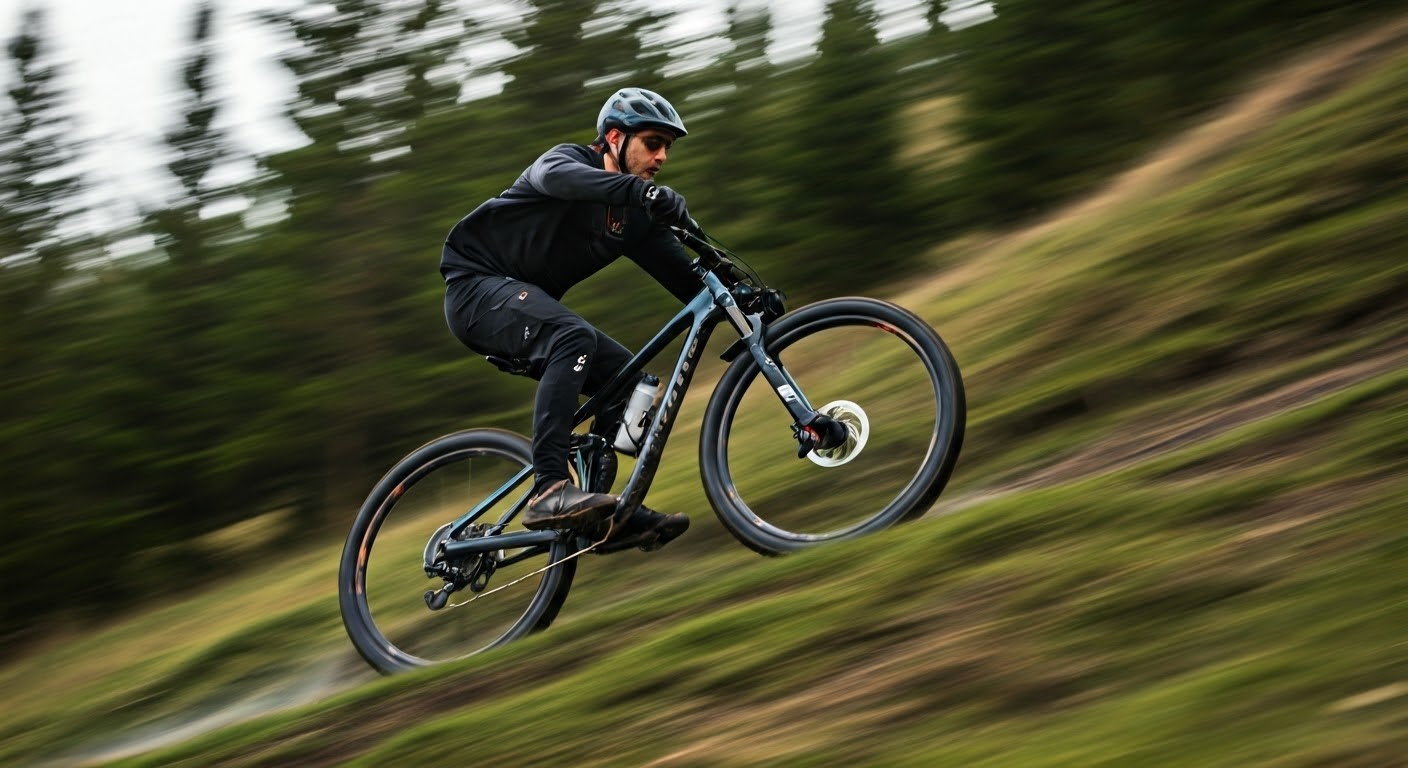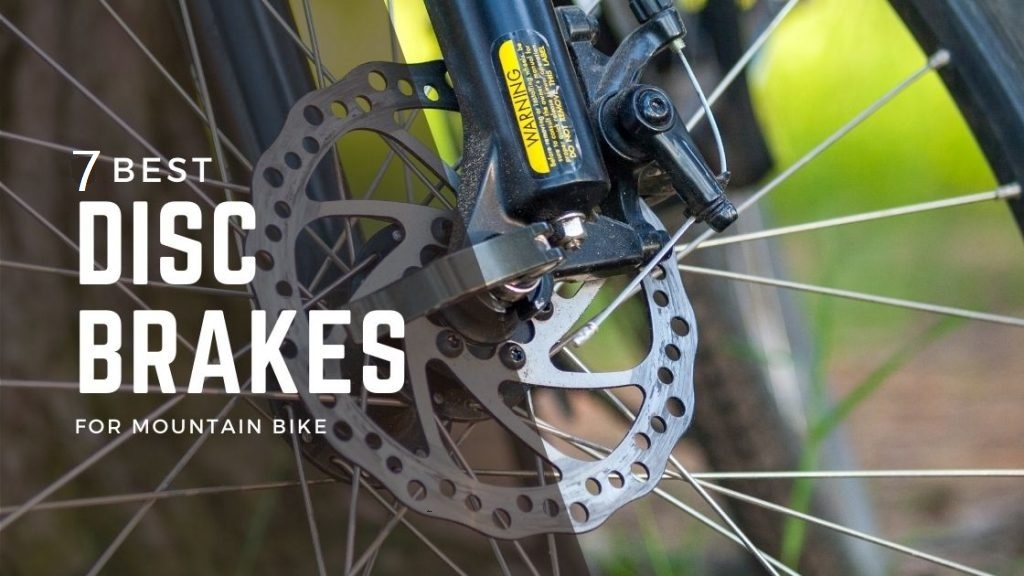Key Highlights
- Disc brakes provide superior stopping power and control compared to traditional rim brakes, making them essential for mountain biking.
- Hydraulic disc brakes offer more power and modulation than mechanical options but can be more expensive.
- When choosing disc brakes, consider your riding style, budget, and the terrain you’ll be tackling.
- Proper maintenance, including regular brake pad replacements and adjustments, will ensure optimal performance and longevity.
- Upgrading to disc brakes can significantly enhance your mountain biking experience.
Introduction
In mountain biking, control and precision are key for gravity riders. Disc brakes have become a must-have part of the bike. Unlike rim brakes, the best mountain bike disc brake rotors use brake pads that clamp against disc brake rotors attached to the wheel hubs. This smart design gives riders powerful brakes, allowing them to stop quickly and make bite point adjustments to their speed easily. The pads are held in place with a split pin, ensuring a secure fit. You simply squeeze the brake lever to slow down smoothly when you go down steep slopes or tricky trails. This feature boosts your confidence and makes your riding experience much better.
Essential Disc Brakes for Mountain Bikes: Your Complete Guide
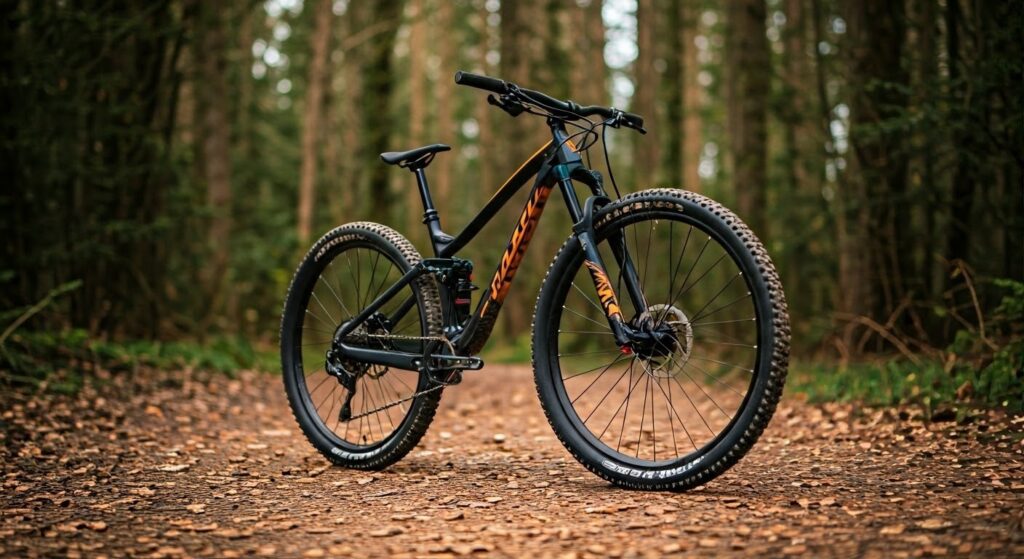
Welcome to your complete guide to mountain bike disc brakes! As you explore high-performance brakes, it’s key to know what sets different types apart. From downhill riders to cross-country enthusiasts, each style needs specific brake features.
You may care about strong stopping power, smooth control, or lightweight. There are many disc brake options for your needs. This guide will help you learn what you need to make a good choice. This way, you can pick the best disc brakes to enhance your mountain biking experience.
1. The Ultimate Choice for Downhill Thrills
When gravity tests you and steep, tricky paths are your fun zone, only strong disc brakes will do. If you love downhill riding, Hope Tech brakes are known for their power and dependability.
The four-piston calipers, like those on the popular Hope Tech 3 V4, give you loads of power. This means you can stay in control on tough trails. These brakes are made to handle the challenges of downhill riding.
Their good modulation helps riders control their speed easily. You can make small speed changes and feel secure even in tough spots. With Hope Tech brakes, you can face any downhill slope with confidence.
2. Top Picks for Trail Riding Excellence
Trail riding requires a braking system that offers both power and control. SRAM’s Guide series is one of the best mountain bike brakes for trail riding. They are known for their great performance and good lever feel.
The SRAM Guide RSC, for example, has a comfortable lever. You can adjust the reach and contact point for a good fit. Its SwingLink technology gives a better lever feel, while the four-piston caliper provides strong stopping power when you need it.
Also, the Guide RSC has better heat dissipation. This helps it perform well even on long and difficult slopes. With SRAM Guide brakes, you can ride tough trails confidently and precisely.
3. Budget-Friendly Options for Beginners
Entering the world of mountain biking can be affordable. Shimano’s Deore series features a great brake set at a bargain price. This makes it a good option for beginners who want to keep costs down.
The Shimano Deore M6100 brakes offer solid stopping power. They also have a surprising lever stroke for the price. While they don’t have as much adjustability as more expensive models, they still perform well and are easy to maintain.
Their sturdy design means they will last a long time. This makes them a smart investment for riders who want dependable brakes without spending too much.
4. High-Performance Brakes for Competitive Racing
Competitive mountain bike racing requires the best performance from all parts, especially the brakes. For racers wanting a strong advantage, full Hope Tech brake systems are the best.
These high-quality brakes combine great power delivery with excellent modulation. This gives riders the confidence to test their limits. The precise brake feel and steady performance of Hope Tech brakes let riders brake later and take corners faster, saving crucial seconds during the race.
Additionally, their strong build and easy availability of spare parts make them a dependable choice in competitive racing.
5. Lightweight Solutions for Cross-Country Adventures
Cross-country riders want bikes that are light but still perform well. SRAM’s Level Ultimate brakes are made for this purpose. They give a great mix of low weight and strong stopping power.
These brakes have a carbon lever blade and a simple design, which helps keep them very light. The two-piston caliper gives strong braking force, and the light lever feel makes it easy to control without tiring your hands.
Using high-performance disc brake pads adds to their stopping power and long-lasting use. This makes Level Ultimate brakes a top choice for serious cross-country racers and fans.
6. Durable Choices for All-Weather Riding
For riders who face tough weather all year, strong and weatherproof disc brakes are a must. Shimano’s XT brakes are known for being very reliable and working well in all types of weather.
These brakes can handle mud, water, and dirt, giving you steady stopping power when conditions are difficult. Shimano XT disc brake rotors are famous for being tough and not warping, which makes them even more reliable in bad weather.
With Shimano XT brakes, you can ride with confidence. Your brakes will work perfectly, no matter what the weather is like.
7. Innovative Designs for Enhanced Modulation
Innovation pushes the development of mountain bike technology, and disc brakes play an important role. Magura’s MT series is notable for its new designs and focus on better modulation.
Take the MT7 Pro, for example. It uses Magura’s Royal Blood mineral oil to improve modulation and give a steady brake feel. Its Carbotecture SL master cylinder is light but very strong.
Additionally, the adjustable bite point helps riders adjust the lever feel to what they like. This makes for a personalized braking experience.
8. Eco-Friendly Disc Brakes for the Environmentally Conscious
As more people realize how important it is to protect the environment, they are looking for better, eco-friendly bike parts. Many companies are now making disc brakes that are good for the planet and still work very well.
One easy way to lessen your impact on the environment is to pick brakes that have organic pads. Organic pads are made from materials that are better for the earth. They create less dust than metal pads, which means fewer harmful particles get into the air.
Also, some companies are using eco-friendly ways to make their products. They are recycling materials for their brake systems. This helps make cycling a greener activity for everyone.
9. Easy-to-Maintain Options for DIY Enthusiasts
For riders who like to work on their bikes, it is important to choose disc brakes that are easy to install and maintain. Avid brakes are a great choice for those who prefer to handle repairs themselves.
Avid brakes have a simple bleeding process and kits available for servicing. This makes routine maintenance easy to do at home. Their caliper designs often allow for quick pad changes and adjustments, which means you spend less time waiting and more time riding on the trails.
With their simple features, Avid brakes help riders manage their bike care and keep their brakes working well.
10. Customizable Brakes for Personalized Performance
Every rider is different, and so are their likes when it comes to how the brakes feel and how they work. Knowing this, many disc brake makers let riders customize their brakes a lot. This way, riders can set their brakes just how they want.
For example, adjustable lever reach is a common option. This feature helps riders move the lever to fit their hand size and needs. Some brakes let you change the bite point, which is where the brake pads touch the rotor.
This level of personalization makes riding more comfortable and gives you better control. It also makes riding more fun and helps with performance.
Mastering the Art of Maintenance: Keeping Your Disc Brakes in Top Condition
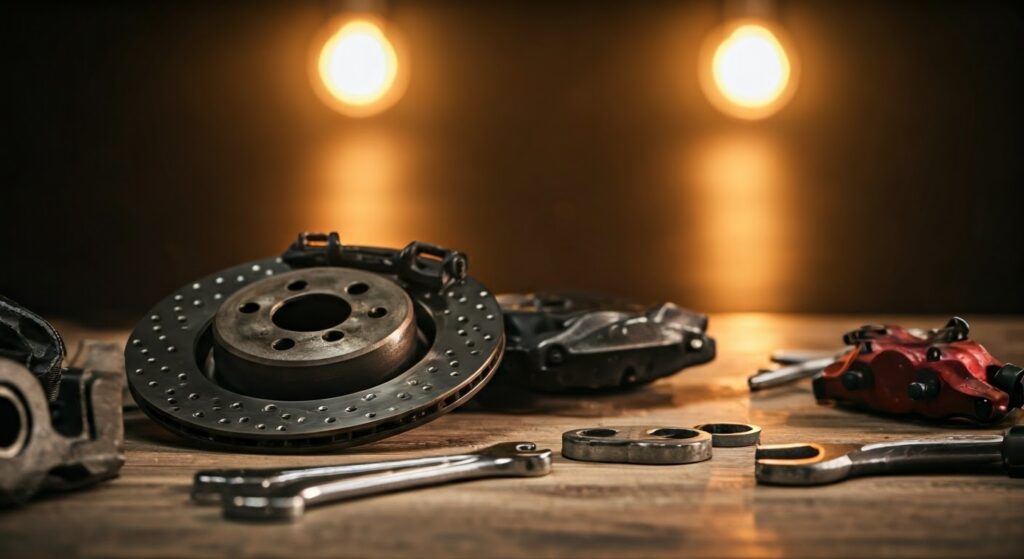
Taking care of your disc brakes is very important. It helps them last longer, work better, and keep you safe on the trails. Regular maintenance improves how well they brake and stops you from spending money on big repairs later.
If you spend a little time on simple upkeep, you can make your disc brakes last a lot longer. This way, you will have good and steady stopping power on every ride. Keep in mind that proper maintenance is good for your safety and helps your mountain bike stay in shape.
Understanding Your Disc Brake Components
To keep your disc brakes in good shape, it’s important to know the main parts. By learning about these parts, you can do regular maintenance and fix common problems.
The lever blade is what you squeeze to use the brakes. It connects to a master cylinder, which usually has DOT fluid or mineral oil inside. This fluid helps to send pressure through the brake hoses.
At the caliper end, you will find the brake pads. They squeeze the disc rotor to help stop your vehicle. Knowing how these parts work together is key to keeping your disc brakes working well.
Routine Maintenance Practices for Longevity
Implementing some simple maintenance tasks will help your disc brakes last longer. It’s important to check your brake pads for damage regularly.
A good rule is to replace the brake pads when they are about 1mm thick or if you feel less braking power or a change in the lever feel. Also, keep your disc rotors clean and clear of dirt. Dirt can make braking less effective and wear down the pads faster.
Check your brake fluid levels often. Top it up or bleed the system if needed to keep the hydraulic pressure just right. By doing these easy maintenance tasks, you can have steady and dependable braking for many years.
Troubleshooting Common Disc Brake Issues
While disc brakes are mostly reliable, you might face some problems now and then. Knowing how to fix these common issues can help you save time and money. If your brake lever feels soft or spongy, there might be air in the brake lines. You need to bleed the lines to fix it.
If the brake is rubbing or dragging, try adjusting the caliper alignment. Check for anything blocking the brakes, like a bent rotor. If your brake lever is too close or too far from the handlebar, you can change the lever reach for a better grip.
For the bite point, which is where the pads touch the rotor, you can often adjust it to improve the lever feel. If you’re uncertain about any part of the troubleshooting or maintenance, it’s best to seek help from a qualified bike mechanic.
When to Seek Professional Help for Disc Brake Service
While you can do some basic work on disc brakes at home, you may need help for certain issues. If you are not comfortable with hydraulic brakes or do not have the right tools, it’s better to let a skilled bike mechanic handle the hard jobs.
Problems like leaking brake fluid, a stuck caliper piston, or a badly damaged brake hose require a professional. Trying to fix these issues without the right skills and tools can cause more damage and put your safety at risk.
Having a qualified mechanic regularly check your hydraulic brakes helps them work well for a long time. It also gives you peace of mind because you know your brakes are safe and working properly.
The Evolution of Mountain Bike Disc Brakes: A Technological Journey
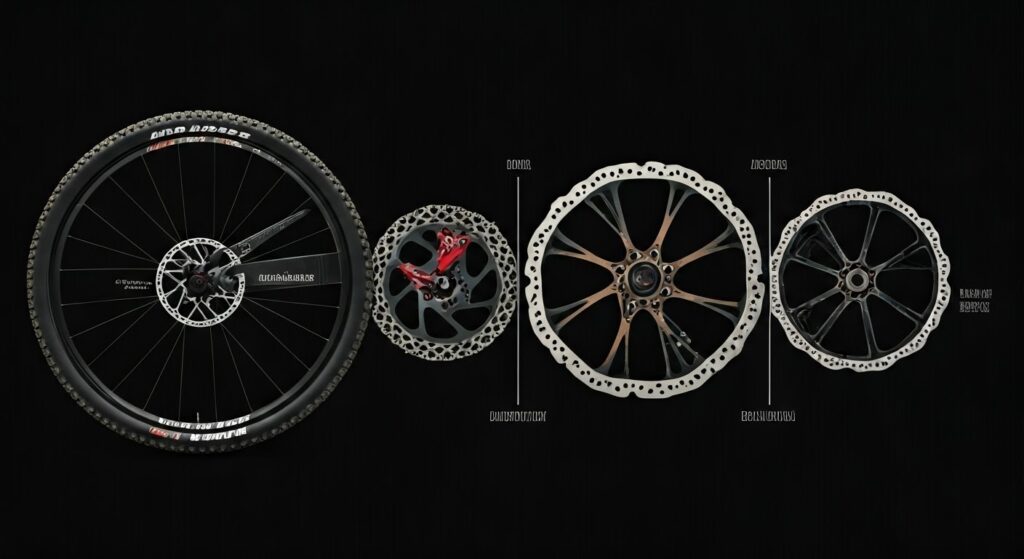
The journey of mountain bike disc brakes has seen a lot of new ideas and changes. This has changed how we ride and what we can do on two wheels. Disc brakes started as a special feature but now they are the standard for modern mountain bikes.
Thanks to ongoing improvements, these disc brake systems are now lighter, stronger, and more dependable. This allows riders, no matter their skill level, to push their limits and enjoy mountain biking with more confidence and control.
The Origins and Early Innovations
The idea of disc brake technology started in the car and motorcycle industries. People soon saw that these brakes had better stopping power and worked well in all weather. In the early 1990s, some mountain bike makers began to try out disc brakes. They saw that these brakes could make riding even better.
At first, disc brakes were heavy and not very reliable. They often had problems like brake fade and uneven performance. As time went on, the technology improved, making the brakes more dependable.
New features came out, like hydraulic actuation, dual-piston calipers, and bigger disc rotors. These changes made the brakes much stronger and better overall.
Breakthroughs in Disc Brake Technology
Over the years, disc brake technology has made many important improvements. These changes have made it better for mountain biking. One major change is the four-piston calipers. They give much more stopping power. This means riders can handle steep and tricky paths with more confidence.
There have also been improved brake pad materials. Options like sintered metal and organic pads help with better braking and fit different riding styles and conditions.
Additionally, new lever designs that are lighter and easier to grip have made riding more comfortable and given better control. Improvements in disc rotors, like floating rotors and designs that help cool down, have also helped make braking smoother and more consistent.
The Future of Disc Brakes in Mountain Biking
As mountain biking changes, the technology will change too. The future of disc brakes looks promising. We can expect better performance, more integration, and more customization.
We will likely see brake systems that are lighter and stronger. New materials and manufacturing methods will help save weight while being durable. Electronic shifting systems, like SRAM’s AXS, are leading to electronic brakes. These systems can provide better precision, control, and customization.
In addition, disc brakes will work better with suspension systems and other bike parts. This will improve performance and make riding more enjoyable.
How to Choose the Right Disc Brakes for Your Mountain Bike

Choosing the best disc brakes for your electric mountain bikes comes down to different things, as different brakes, such as the SRAM Guide RE, have a different feel. You need to think about how you ride on test bikes, the types of trails you ride on, and what you can afford when considering their price tag. Look at what you need from your brakes. Focus on the features that match your riding style.
If you want strong stopping power for downhill rides, a light design for cross-country rides, or a mix of good performance and cost for trail riding, these important factors will help you find the right disc brake system.
Assessing Your Riding Style and Needs
The first step in picking the right disc brakes is to think about your riding style and what you need from your brakes. If you are a cross-country rider who values speed and efficiency, you might choose lightweight two-piston brakes. These brakes offer a lighter brake feel.
If you are a trail rider, you may want the stronger power and control of four-piston brakes. These give a good mix of weight and performance. For aggressive riders who take on tough trails like enduro or downhill, powerful four-piston brakes work best. They have great heat dissipation.
Also, think about the kind of terrain you ride on. Steep and technical descents will require more from your brakes than smooth cross-country trails.
Comparing Hydraulic vs. Mechanical Disc Brakes
Disc brakes work with two types of systems: hydraulic and mechanical. Each has its benefits. Hydraulic brakes use fluid to move force from the lever to the caliper. They are known for their strong stopping power, good lever feel, and smooth control compared to mechanical brakes. On the downside, they can cost more and might need special tools for free stroke adjustment to fix issues, like to bleed the system.
Mechanical disc brakes use a cable system to make the calipers work. They usually give less power and control than hydraulic brakes. However, this type of brake tends to be cheaper and simpler to take care of. This makes them a good choice for riders on a budget or those who want an easier system.
Understanding Disc Brake Sizing and Compatibility
Disc brakes come in different sizes. It is important to make sure that your frame, fork, and brakes work well together. For mountain bikes, the most common rotor sizes are 160mm, 180mm, and 200mm. Larger rotors can stop better but might add a little extra weight.
Your frame and fork will have special points for mounting disc brakes. You need the right adapter for everything to fit well and work right. Check your frame or fork maker’s guidelines to find out which rotor size and adapter type you should use.
Also, think about how your wheels fit with different rotor sizes. Centerlock rotors connect directly to the wheel hub. Six-bolt rotors attach with six bolts placed around the hub.
Evaluating Brake Pad Materials for Your Riding Conditions
Choosing the right brake pads is important for how well your bike stops. Organic brake pads, which are also called resin pads, offer great control and a strong initial grip. They work well for many types of riding.
Sintered metal brake pads have better stopping power, especially in wet or muddy conditions. They usually last longer than organic pads. However, they might need a more careful setup and can be louder when used.
Think about the weather and dirt conditions where you ride most often when picking brake pad materials. If you often ride in wet or muddy places, sintered metal pads will give you more reliable performance.
Upgrading Your Mountain Bike With Disc Brakes: A Step-by-Step Guide
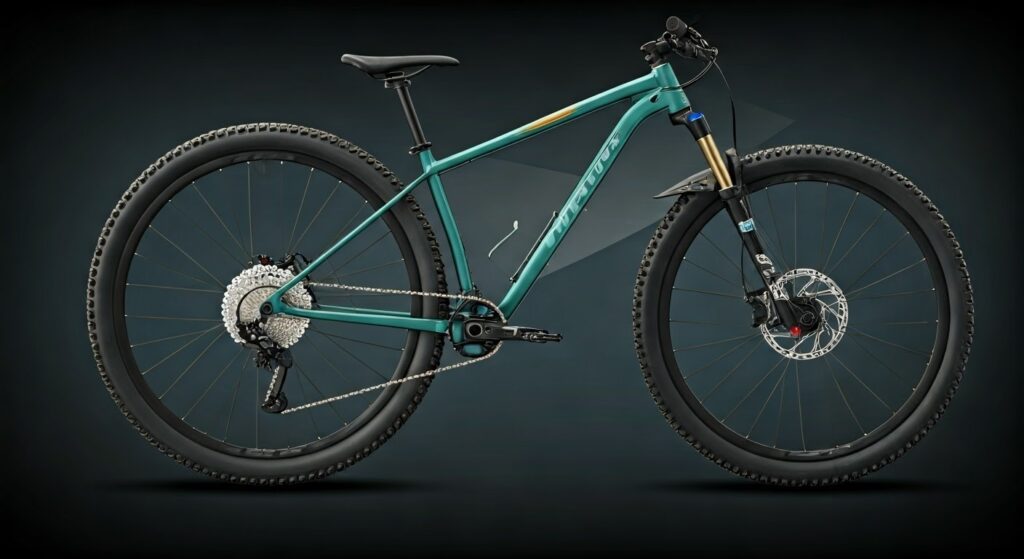
Upgrading your mountain bike with disc brakes can greatly improve your ride. It gives you better stopping power, control, and modulation. If you have the right tools and get ready properly, the installation can be easy.
By following these steps, you can successfully install disc brakes on your mountain bike. This upgrade will take your performance and enjoyment on the trails to the next level.
Tools and Equipment Needed for Installation
Before starting the installation, make sure you have all the tools and equipment ready. This will help your upgrade go smoothly. Here are the things you need:
- Disc brake-specific tools: These tools help with tasks like cutting brake hoses, bleeding the system, and lining up calipers.
- Basic tools: Keep a set of Allen keys, wrenches, screwdrivers, and a torque wrench nearby. You will need these for securing bolts and adjusting parts.
- Isopropyl alcohol and clean rags: You will use these for cleaning brake parts and removing any dirt during the installation.
Having these tools and items ready will help you complete the installation quickly and avoid delays.
Preparing Your Mountain Bike for Disc Brake Installation
To install new disc brakes on your mountain bike, it’s important to prepare properly. Start by taking off the old brake parts. Remove the levers, calipers, rotors, and cables or hoses.
After that, check the frame and fork for any spots where you can mount disc brakes. If your bike does not have these mounts, you’ll need to see if it can be compatible or look into aftermarket options. Make sure the mounting areas are clean and free of dirt.
Next, collect all the parts you need for your new disc brakes. This includes the levers, calipers, hoses, rotors, and any adapters you might require. Having everything ready will help the installation go smoothly.
Detailed Instructions for Installing New Disc Brakes
With your mountain bike ready and your tools nearby, use these simple steps to install your new disc brakes:
- Mount the levers: Fix the brake levers to your handlebars with the correct clamp. Make sure they are placed comfortably and safely.
- Install the calipers and connect the hoses: Attach the calipers to the frame and fork. Route the hoses through the cable guides. Connect the hoses to the levers and calipers tightly.
- Align the calipers and install the rotors: Center the calipers with the disc rotors, keeping them parallel. Attach the rotors to your wheel hubs, following the right torque settings.
Be sure to check the manufacturer’s instructions for your brake model, as the steps may differ just a bit.
Adjusting and Testing Your New Disc Brakes for Optimal Performance
Once you install your new disc brakes, it is important to adjust and test them for the best performance and safety.
- Adjust the lever reach and bite point: Set the lever reach to match your hand size and preference. Change the bite point, which is the distance the lever moves before the pads engage, to get the right lever feel.
- Bed in the brake pads: Bedding in the brake pads helps them fit well with the rotors for the best performance. You can do this by making a series of controlled stops and gradually increasing the braking force.
- Test your brakes: Go to a safe, open area to test your new brakes. Check that they work properly, give enough stopping power, and respond smoothly to your lever input.
Conclusion
In conclusion, knowing how to take care of your bike and the changes in mountain bike disc brakes is very important. This helps you have the best biking experience. By picking the right disc brakes for your riding style, checking if they fit, and thinking about the materials, you can improve how your bike performs and how safe you feel. When you upgrade your mountain bike with disc brakes, pay attention to details and follow the right steps for installation. No matter if you love downhill riding or going cross-country, choosing the right disc brakes will boost your skills. Keep learning, stay safe, and enjoy mountain biking with confidence.
Frequently Asked Questions
How do I know if my mountain bike can be upgraded to disc brakes?
To see if you can upgrade your mountain bike to disc brakes, check your frame and fork. Look for mounting points near the wheel axles called disc brake bosses. If you find these, your bike might work with disc brakes. Still, it’s best to ask your bike’s manufacturer or a good bike mechanic. They can help confirm if your bike’s frame design is suitable.
What are the advantages of hydraulic disc brakes over mechanical ones?
Hydraulic disc brakes have many important benefits compared to mechanical ones. First, they give stronger braking power and better control of your speed. This means you can adjust your speed more easily. Also, the hydraulic system can adjust itself. This means it needs less care and is easier to look after than mechanical disc brakes.
Can changing my disc brakes improve my mountain biking performance?
Upgrading your disc brakes to a better or stronger set can greatly improve your mountain biking performance. Doing this will help you brake better and have more control. This leads to faster speeds and gives you more confidence. Overall, it makes your ride more enjoyable.
How often should I replace the brake pads on my mountain bike disc brakes?
The lifespan of brake pads can change based on your riding style, the type of terrain, and the material of the pads. It is a good idea to check your brake pads often for wear. Generally, you should replace your mountain bike disc brake pads when they have about 1mm of material left or if you feel they are not braking as well as before.

Taylor is an outdoors & sports equipment specialist, sports author, bike traveler, bicycling and skating expert, and smoke-free ride activist. He is also a regular reviewer of outdoor sports gadgets and accessories. About safety gear and biking facts he analyzes and gives his feedback to outdoorxsports. Writes and tests to help him, you, and us.

